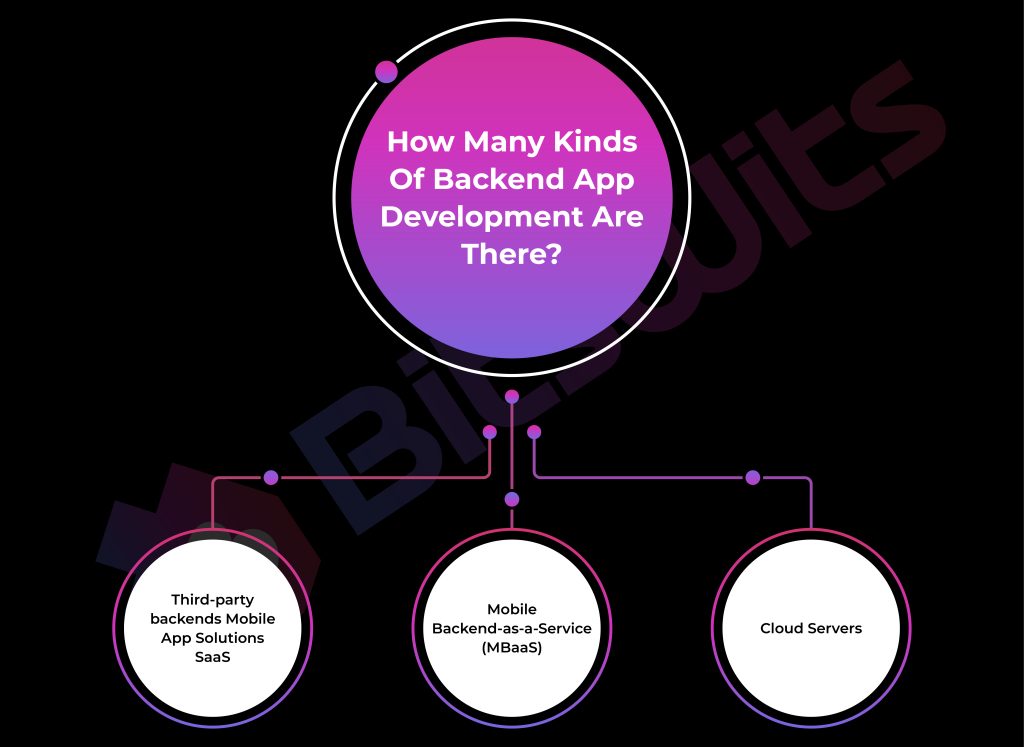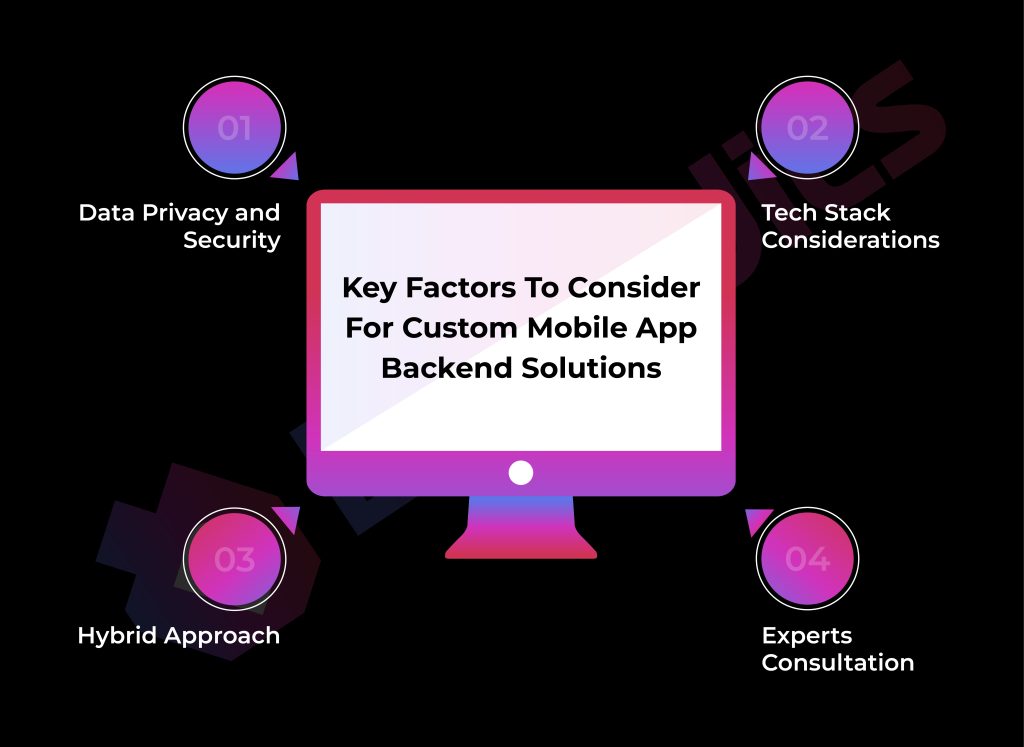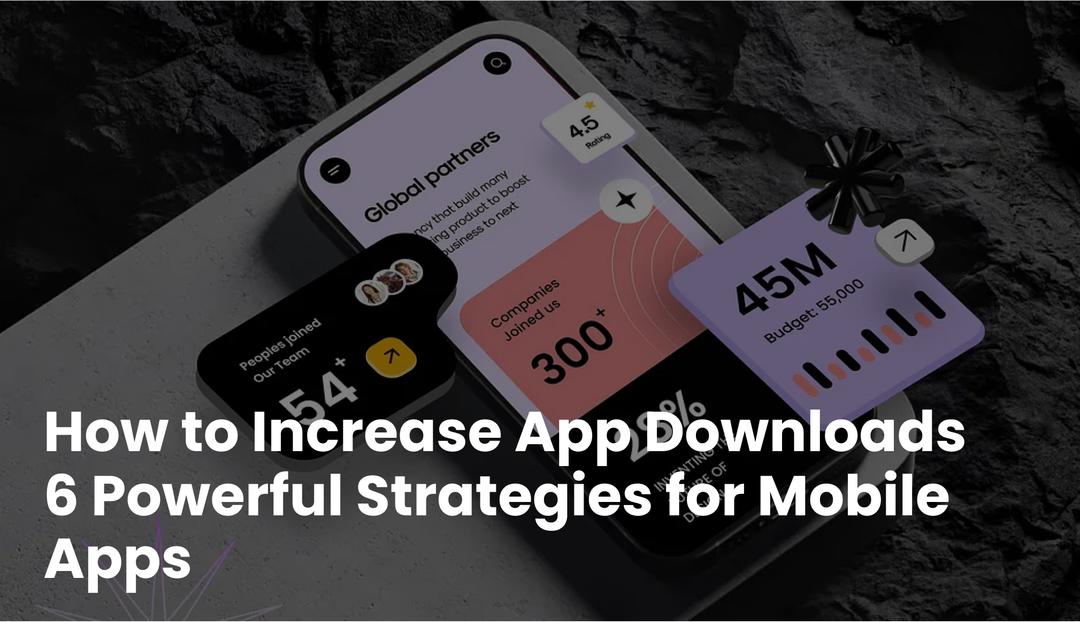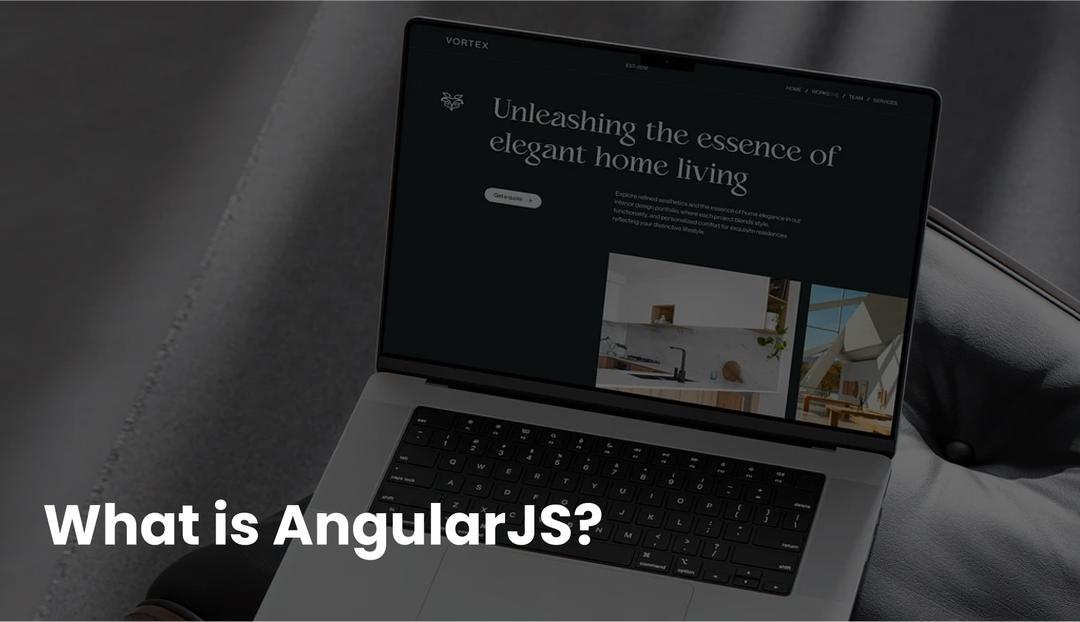But a car doesn’t run on looks alone, right? Under the hood, there’s an engine that makes everything work. You can’t see the engine while driving, but without it, the car wouldn’t move.
Similarly, mobile app backend development is the engine that powers your app from behind the scenes. It handles all the essential tasks that ensure your app functions smoothly.
Here is what a backend does:
Data processing: When you make a request in the app (like checking your account or sending a message), the backend processes it and delivers the right information to you—just like the engine makes sure your car moves when you press the gas pedal.
Data storage: The backend stores your app data (such as your login info, settings, or previous actions) so it’s always available—similar to how a car engine stores fuel to keep running.
Security: The backend ensures your data stays safe like an engine keeps your car running smoothly and securely on the road.
Now suppose you are using any Taxi application for booking a ride. You will enter the destination and see all the available drivers on the front end. But sending your request to the drivers, tracing the location, making the payments, and keeping your ride history is done in the backend. The front end shows it to you, but the mobile application’s backend development does all the work behind your screen.
Approximately 50% of your app development cost goes into building a solid backend. If you’re looking to understand how backend solutions impact the overall development budget, read our Mobile App Development Cost guide to learn more.
The front end is what you see and interact with; the back end is the strong engine that keeps it all running smoothly. Without a backend, your app would look good but wouldn’t do anything, just like a car without an engine.
Now that you have a good feel for the backend development and why it’s important for your mobile app or website, let’s get a bit more technical.
What is Backend Development And How Does It Work?
Backend development is working on the servers, databases, and code to make and keep that functionality alive. The backend ensures that your app or website functions efficiently without any hiccups. It’s what makes your app fast, secure, and scalable.
Key Components
- Servers: These handle requests from users.
- Databases: Where all the data (user profiles, orders, etc.) is stored.
- APIs: Connect the backend to the front end for smooth communication.
The backend is responsible for things like:
- Storing user data (such as login info and preferences)
- Authenticating users to make sure they’re who they say they are
- Processing requests (like booking a ticket or checking out in an online store)
The backend of a mobile app or a website is like a backbone, ensuring that all the processes work seamlessly.
In this backend app development guide, we walk you through different types of backends, tools, architecture, and the benefits of building a strong, scalable backend that supports the growth of your app as well as user experience.
Backend infrastructure is important for the performance and scalability of apps. check out our Application Development Life Cycle for a deeper look into how the backend supports each stage of app development.
Success Of Your App Starts With A Well-Built Backend.
Ready to deliver a top-tier app experience? Schedule a free consultation with our mobile app development team!
Hire Expert
How Does Mobile App Backend Development Work

When a user of a mobile or web app interacts with the front end (clicks, types, or requests something), that request is sent to the server.
The server processes the request by either accessing data from the database or retrieving/storing files from the file server, often via an API (Application Programming Interface).
Once the server has processed the request (such as retrieving the requested data), it sends the response back to the front end, which displays the result to the user.
For more information on app architectures and the different stages, check out our Guide to Creating Mobile App Wireframes.
Example (Shoe Purchase)
Let’s apply this to an example of purchasing shoes on an app:
- The user taps “Buy Now” in the mobile app (front).
- The front end sends this request to the server.
- The server checks the database to confirm the item’s availability and connects to the file server to display product images.
- After processing, the server returns the final response (confirmation of the purchase) to the front end, which shows the confirmation to the user.
Building apps like these may seem straightforward, but more complex applications, such as finance or healthcare apps, require additional steps for security, data management, and real-time responses.
Developing a healthcare app, for instance, involves the same core interactions but integrates advanced processes to securely manage sensitive health information, provide reliable data access, and support seamless patient-provider communication.
How Many Kinds Of Backend App Development Are There?

Now that you understand how a mobile backend works, let’s see what different types of backend development options there are. It will help you learn which solution you need, be it fast, versatile, or fully customizable, to meet your business requirements.
Mobile backend solutions are like meal options:
- Third-party solutions (SaaS) Third-party solutions are like ordering from a restaurant. Choose your meal from the menu, and pay for it.
- MBaaS is kind of a frozen dinner, some things are already prepared but you can modify it.
- Custom Solution is like cooking from scratch. Everything depends on you, but takes a lot of time and effort.
Now, let’s take a closer look on each of the backend mobile app solutions:
1. Third-party backends – Mobile App Solutions SaaS
Third-party backends or software-as-a-service (SaaS) are pre-built software services you can add to your app. You pay for a subscription, plug in your front end, and your app is ready. Quick, but at the mercy of what the service offers. Below we will discuss a few third-party software services.
Below we will discuss some popular third-party platform examples
Adobe
Adobe is the world’s leading digital media and marketing solutions company. Its suite of products, commonly known as Creative Cloud, made the new standard to the industry through its tools, including Photoshop, Illustrator, and Premiere Pro. Furthermore, Adobe incorporated AI in its SaaS offerings because of Firefly Image 2, which makes it possible for design and media production through AI-powered tools. Some of its features include
- Creative software for design, media, and marketing
- AI-powered tools like Generative Fill in Photoshop
- Vector graphics software and templates
Adobe has grown to over 29,000 employees in more than 70 countries worldwide while transforming how digital information is experienced via its groundbreaking SaaS platform.
Salesforce
Salesforce is the global CRM market leader. Since its founding in 1999, Salesforce has invented the multitenant, cloud-based SaaS model. Today, Salesforce empowers thousands of companies from all sizes and industries to talk to their customers in a whole, new way. Some of these offerings include:
- Centralized Customer Data Management
- Time and automation tools
- Data and analytics based on AI, and personalized customer engagements
The above depicts some of the cool features offered by Salesforce. Salesforce also offers Sales Cloud, Service Cloud, Marketing Cloud, and Commerce Cloud. All these further enable companies to manage the entire lifecycle of their customers well.
Shopify
Shopify is one of the most used SaaS e-commerce platforms across the globe. Even huge brands like Allbirds, PepsiCo, and Staples trust the site. The platform gives a full-service offering that lets people build and manage their online store. Some key features that Shopify offers are:
- Creating and hosting an online store
- Managing multiple payment options
- Online store translation capabilities
- Shipping management
- Marketing and growth tools for business
Millions of businesses across 175+ countries are powered by Shopify. If you are looking for a scalable ecommerce platform, it is time to choose Shopify.
Intuit Global
Intuit is one of the financial software solution companies leading around the world. Its SaaS products like QuickBooks and TurboTax help small businesses and individuals in managing their finances effectively. The central features are:
- Tools for financial management
- Tax preparation and filing
- Small business accounting solutions
Intuit focuses on putting more money in customers’ pockets, saving them time, and making sure they’re confident in their financial decisions through its easy-to-use SaaS platform.
Well, now we’ve seen that there are numerous third-party backend solutions available out there, but we can only mention some of the most popular and influential ones that have been out in the market so far.
2. Mobile Backend-as-a-Service (MBaaS)
MBaaS has greater flexibility over the third-party solutions of SaaS. It provides you with reusable components that can handle very common features like user authentication, push notifications, and cloud storage, with the option to add custom code as well.
Here are some of the well-known MBaaS:
Progress Kinvey
Progress Kinvey is one of the top MBaaS companies, allowing developers to build and deploy apps across iOS, Android, web, and progressive web platforms. Schneider Electric and VMware are significant customers of Progress Kinvey.
Important Features:
- Push notifications
- User Authentication and Management
- IoT (Internet of Things) Data Management
- Industry-specific microservices: Life Sciences, Insurance, and Manufacturing
Kinvey is very flexible with the pricing. It can thus suit any developer, big business, or small business company. In addition, rich documentation and support is available, making it easy for any skill-level developer.
Firebase
Firebase is one of the strongest contenders in the list of the most popular serverless development environments for Android, iOS, and web. It simplifies mobile app backend development by offering the whole suite of tools and services catered to mobile and web app developers.
- Realtime NoSQL Database
- Supports several authentication methods
- A form of cloud solution for user-generated content in terms of images, videos, and files.
- Firebase Cloud Messaging (FCM)] sent updates directly to the mobile or web clients.
Firebase offers modular services so you can pick only those features you need instead of committing to the full platform. However, their query capabilities may be pretty limited when trying out more complex apps, and for an application with high transactions like retail, their pricing model can get pretty steep.
AWS Amplify
AWS Amplify is one of the more versatile back-end development platforms by Amazon Web Services. It offers libraries, user interface components, and a CLI that simplifies the development of mobile as well as web applications significantly. Companies such as HyperTrack, Orangetheory, and Branch leverage Amplify to develop an application that is robust as well as scalable.
- User Management: A built-in user authentication and authorization system.
- A framework that’s used to send push notifications both for mobile as well as for web clients.
- Multiple storage options for data, which include NoSQL as well as SQL storage options.
- It supports features of machine learning, such as image recognition, text interpretation, and speech transcription.
While AWS Amplify gives a rich feature-rich backend, the setup is much more complicated and requires a lot of learning. This complication is a turn-off when companies need to get to the market with products quickly but is well-suited for big projects where security and scalability need to be highly set.
Your Business Needs an App—Let’s Build It
Let’s discuss how we can develop the perfect app for your business.
Hire Expert
3. Cloud Servers
Cloud servers are virtual servers hosted in a cloud computing environment rather than on any physical hardware. These clouds provide access to available computing resources on demand so that businesses and developers may expand their infrastructure with ease and speed, all without having to manage one piece of hardware. Cloud servers are flexible, and economical, and may be accessed remotely from any place.
All cloud providers offer full-fledged enterprise security features, including firewalls, data encryption, and identity management, to ensure the safety of your data. Here are some popular cloud service platform
1. Google Cloud Platform (GCP)
Google Cloud Platform is a strong cloud computing solution, where Google Computing Engine provides the virtual machine service of this company. GCP has been increasingly popular in developer communities, as its scope varies from machine learning, big data, and analytics, making it popular among developers who focus on AI-driven apps.
- These offer customizable server configurations, which provide the possibility to tailor CPU as well as memory resources.
- Provides Google’s global fiber network, achieving speed and security to reduce latency and improve performance.
- It offers the latest tools in developing AI, including TensorFlow, which is highly integrated into GCP.
GCP is best for companies and developers who are working on AI, big data, and machine learning.
2. Microsoft Azure
The other dominant cloud service provider available is Microsoft Azure, with its services ranging from virtual machines to app hosting. Its virtual machines allow businesses to have their apps running on the global infrastructure of Microsoft.
- Suitable for businesses that already use Microsoft products, including Office 365, Windows Server, and SQL Server.
- Azure provides assurance for 99.9% uptime on its VMs, which means your application would be available always.
- Azure offers the provisioning of hybrid cloud configurations for the integration of an on-premise infrastructure to its cloud-based services.
Microsoft Azure is best for enterprises that heavily utilize most Microsoft products and need full-fledged hybrid cloud capabilities.
3. IBM Cloud
IBM Cloud provides a wide set of cloud solutions, including virtual servers, Kubernetes, and AI integration. It is very popular in enterprise applications when security and compliance become major points of concern.
- Besides virtual machines, IBM Cloud also offers bare metal servers for companies that want to have full control over their server environment.
- IBM Cloud is known for its security features, so it will suit industries that need strict data protection and follow the regulations. For example, healthcare and finance are such industries.
- IBM integrates cutting-edge technologies like AI and blockchain in their cloud offerings.
It is best for enterprises that require robust security and compliance, especially in industries like health care, finance, and government.
Key Factors To Consider For Custom Mobile App Backend Solutions

People are increasingly relying on mobile apps for daily services, Statista reports that global mobile app revenues are expected to reach $673 billion by 2027, showing a significant increase from $254 billion in 2019. This growing dependence on mobile apps makes it essential to invest in a fully functional backend to handle the rising user demand and ensure optimal performance.
If your app requires high-performance capacity, enhanced security, complex integration requirements, or anything else, a custom solution provides the scalability and control you need. Here are the main factors you should consider for your next custom app development project.
Data Privacy and Security
A custom back-end means you can create an application without much reliance on third-party integrations for maximum data security. It may be an especially important benefit if you deal with sensitive information from customers or are in a regulated industry such as healthcare, finance, transportation, etc.
Tech Stack Considerations
Choosing the right technology stack is the first step to custom mobile app backend development. You can use either Node.js or Ruby on Rails in case you think scalability and performance are major requirements for the project. Both the frameworks are scalable and support full scalability for developing a custom backend.
Hybrid Approach
In some cases, a hybrid approach may be the best fit. This involves combining elements of a custom backend with third-party services like SaaS (Software as a Service) or MBaaS (Mobile Backend as a Service). This mix provides the flexibility of a custom backend with the convenience of pre-built services, depending on your app’s needs.
Experts Consultation
To ensure you choose the right solution, it’s essential to consult with experienced developers who can analyze your app’s requirements and create a viable development plan. They will help you determine whether a fully custom backend, a hybrid approach, or something in between is best for your project.
The level of customization comes with a significant price tag—you’ll need to hire skilled backend developers and potential investment for additional infrastructure.
If you’re looking for inspiration to kickstart your next project, check out these 55 Mobile App Ideas to spark your creativity and help you plan your app’s development journey.
Need Experts Who’ve Built 500+ Apps?
Trust our experienced team to build the perfect app for your business.
Hire Expert
Backend App Architecture and Server: The Foundation Of Software Stack
There are a few core components that make up the backend’s “Software Stack”—basically, the tools and systems that keep your app functioning behind the scenes.
One thing to note is that the back end infrastructure can look a little different depending on the type of app you’re building. For example, some apps rely on data warehouses for storing large amounts of information, while others may use cloud-based servers or containerization for flexibility and scalability. APIs often step in to simplify complex processes, allowing the app to communicate with other services effortlessly.
No worries, we are not writing a very long boring story about the backend tech stack. We’ve made a detailed table summarizing the tech stack to help you make the right choices for a successful project.
The tools we are mentioning in the table are considered the best tools for backend app software stacks.
|
Category
|
Tool
|
Description
|
Key Features
|
|
Servers
(Core machines that host your app and process requests from users.)
|
NGINX
|
An open-source web server used for web serving, load balancing, and caching.
|
– Handles web traffic efficiently.
– Supports media streaming, reverse proxying, and email protocols.
|
|
–
|
Apache
|
A reliable open-source web server that powers over 50% of websites globally.
|
– Supports dynamic content, session tracking, and URL redirection.
– Highly customizable via modules.
|
|
Databases
(Store and manage your app’s data, from user profiles to transactions. )
|
MySQL
|
An open-source relational database management system used for structured data.
|
– Easy to set up and scale.
– Ideal for structured data like user profiles, transactions, and products.
|
|
–
|
MongoDB
|
A NoSQL database for handling unstructured or semi-structured data, such as documents.
|
– Flexible, JSON-like document storage.
– Ideal for social media or apps handling large amounts of unstructured data.
|
|
Middleware
(“glue” between your app’s frontend and backend.)
|
Custom Middleware
|
Software that acts as a bridge between the frontend and backend, managing API calls and data flow.
|
– Facilitates communication between client and server.
– Error handling and business process management.
|
|
Git Clients
(Help developers collaborate on code, track changes, and manage version control.)
|
SourceTree
|
A Git GUI client that simplifies repository management and collaboration.
|
– Visual interface for managing code.
– Simplifies branching, pull requests, and merge conflicts.
|
|
–
|
GitHub Client
|
A platform for hosting, managing, and collaborating on code with version control.
|
– Cross-platform support.
– Ideal for managing open-source projects and version tracking.
|
|
Microservices
(smaller components of an app that operate independently.)
|
Kubernetes
|
An open-source platform for managing containerized applications across clusters.
|
– Automates container deployment, scaling, and management.
– Ensures high availability and scalability.
|
|
–
|
Docker
|
A platform for developing, shipping, and running applications in containers.
|
– Simplifies app deployment by packaging everything needed in a container.
– Ensures consistency across environments.
|
|
Local Development Environment
(Testing environments on your local machine where you can develop and test the app.)
|
WampServer
|
A local server environment for developing and testing web applications.
|
– Includes PHP, MySQL, and Apache for local development.
– Ideal for testing before deployment.
|
|
–
|
XAMPP
|
A cross-platform local development environment with a web server solution stack.
|
– Contains Apache, PHP, MariaDB, and Perl for local testing and development.
– Works on Windows, Mac, and Linux.
|
|
Collaboration Tools
(Help teams stay organized, communicate effectively, and manage projects from start to finish.)
|
Slack
|
A cloud-based messaging platform that helps teams communicate and collaborate in real time.
|
– Integrates with various tools (e.g., GitHub, Google Drive).
– Organized channels for different projects or teams.
|
|
–
|
Jira
|
A project management tool used by development teams to track tasks and progress.
|
– Agile-friendly (supports Scrum and Kanban).
– Task management and team collaboration features.
|
|
App Performance Testing
(These tools simulate heavy usage to ensure your app can handle real-world conditions)
|
Apache JMeter
|
A tool for testing the performance of web applications under load.
|
– Simulates heavy traffic and measures app performance.
– Provides detailed reports on bottlenecks and response times.
|
|
–
|
AppLoader
|
A performance testing tool for simulating real-world app usage scenarios.
|
– End-to-end performance testing across different environments.
– Detects potential performance issues before deployment.
|
Advantages of Backend Development
Backend driven development is the foundation of any app or website. A well-built backend offers numerous advantages, including:
- Quick Development Speed: Mobile app backend development frameworks and tools speed up the app development process, allowing you to launch your product faster.
- Cost-Efficient: Pre-built backend solutions (like cloud services and databases) reduce the need for expensive infrastructure and custom development.
- Focus on Core Business: By outsourcing or automating backend processes, business owners can focus on their core activities rather than technical details.
- Better Output in Less Time: A well-structured backend allows for faster processing of data, ensuring that apps run efficiently and deliver a seamless user experience.
- Reduced Time to Market: With tools like NGINX, Docker, and MySQL, developers can quickly set up the backend, reducing the overall development time.
- Expanded Feature Set: A scalable backend lets you easily add new features to your app without overhauling the entire system.
- Outsourcing of Cloud Infrastructure: Cloud services like AWS and Microsoft Azure allow you to scale your backend as your app grows without needing to manage physical servers.
- Continuous Delivery and Integration: Automation tools make it easier to roll out updates and new features without downtime or manual effort.
- Performance and Security: A well-developed backend ensures your app can handle large amounts of traffic and data while keeping user information secure.
- Privacy Requirements (GDPR Compliance): The backend ensures compliance with data protection regulations, like GDPR, which helps protect user data.
Does Your Mobile App Need a Backend?
As a business owner, you’re likely wondering if your mobile app really needs a backend. Let’s break it down simply—if your app will handle any user data, it absolutely needs a backend.
Here are some key questions to help you decide if your app requires backend support:
Will your app collect or store user information?
If your app allows users to sign up, store preferences, or track personal data (like fitness apps), you need a backend to securely store this information.
Will your app display personalized or dynamic data based on user behavior?
For example, if your app suggests products based on past purchases or shows tailored content, a backend is essential to store and analyze user activity.
Does your app need user authentication?
If your app requires users to log in (think e-commerce or social media apps), the backend is responsible for managing authentication and security.
Do you want users to access their information across multiple devices?
If your app needs to sync data between a user’s phone, tablet, and other devices, a backend is necessary to ensure smooth data synchronization.
Will your app provide content (like videos, articles, or music) to users?
If your app delivers any kind of content that updates frequently or is consumed by users, a backend will store and serve this content efficiently.
If you answered “Yes” to any of these questions, your app will need a backend.
Having a solid backend is crucial for the functionality, scalability, and security of your app. It’s the engine that powers the features users rely on.
Get a Free Consultation with Our Expert Development Specialist!
Our regular consultation fee is $400, but for you, it’s absolutely free! Don’t miss out—call us now and start turning your app idea into reality.
Hire Expert
Next Steps: Choosing the Right Tech Stack
When developing the backend for your app, it’s important to choose the right technology stack. Your tech stack should:
- Match your app’s specific needs: Whether you need robust data storage, user authentication, or real-time updates.
- Align with your business logic: Ensure the backend can handle your app’s core functions now and in the future.
- Support scalability: As your app grows, the backend should be able to handle more users and data without compromising performance.
Conclusion
A strong backend is at the core of any high-performing mobile app.
Skilled developers have deep knowledge of mobile app backend functions, therefore they can choose the right tools and technologies to create scalable, secure, and user-friendly backends, ensuring that mobile solutions continue to perform smoothly, even as the app grows and backend technologies evolve.
A well-developed backend will always be the key determinant in shaping a user experience and driving an app’s success. Therefore, adherence to best practices and a structured development process are basically essential to launching and maintaining an effective app.
Keep Your Users Happy With A Secure & Efficient Backend
We’re the experts you’ve been looking for. Let’s discuss your app idea with our app development team!
Hire Expert
FAQs











